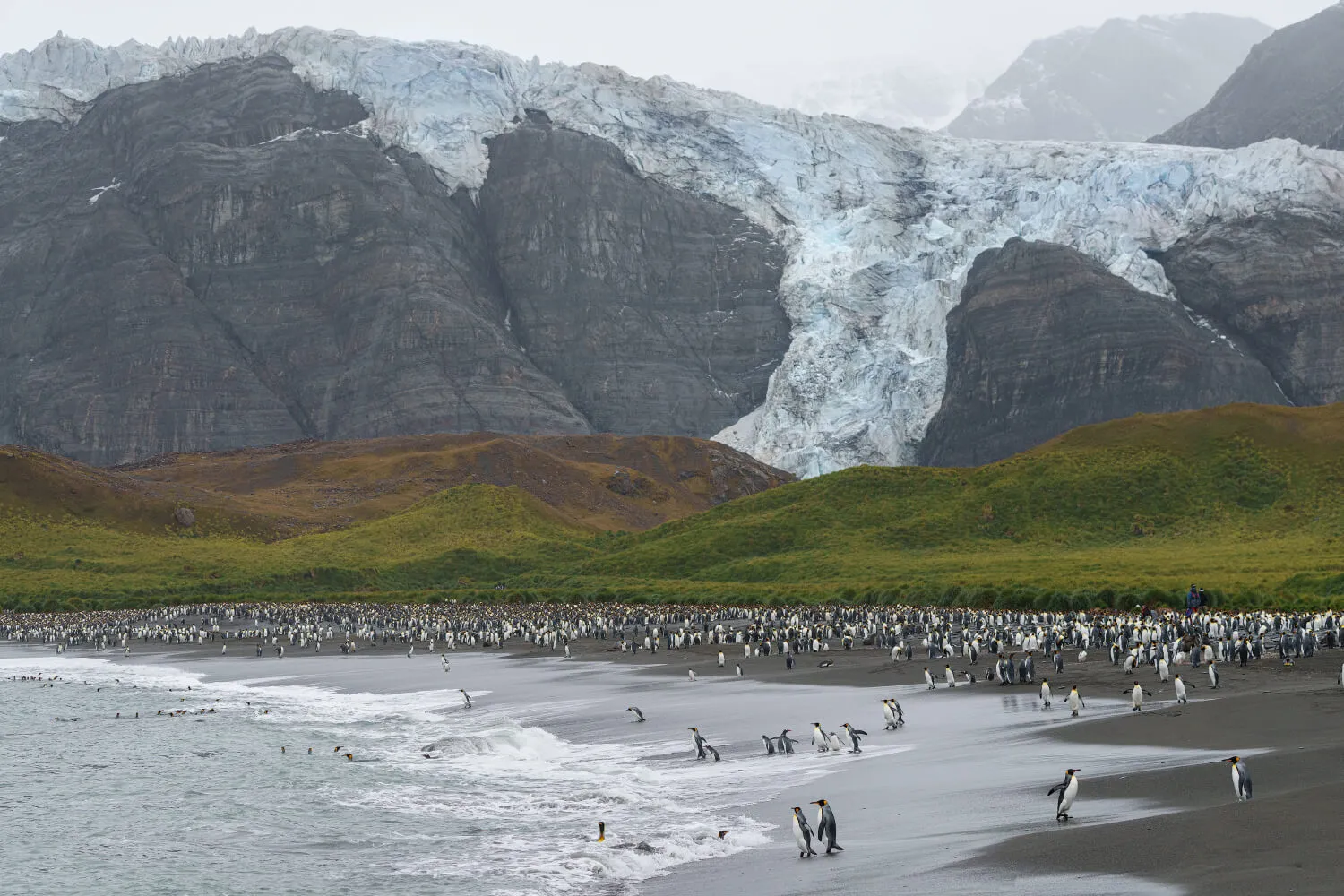

Originally from Santiago, Chile, Anais has always been an avid lover of the outdoors. While she’s guiding expeditions for Antarctica21, she matches her strong affinity for the mountains, especially in Chilean and Argentinian Patagonia, with her love of photography.

Not only does she teach photography on our small ship voyages, but she also enjoys capturing the journey for guests and our team. She’s particularly fond of black-and-white photography, which she believes adds an even more incredible layer to documenting Antarctica’s wild bounds. Keep reading to learn why! Black-and-white photography captures the essence of Antarctica, a remote and captivating continent, in a striking and timeless manner. Through the absence of color, the monochromatic palette allows photographers like myself to convey Antarctica's raw beauty, dramatic landscapes, and unique elements in a powerful and evocative way. The stark and desolate nature of the Last Continent lends itself well to black-and-white photography. The removal of color eliminates distractions and allows the viewer to focus on the landscape's textures, shapes, and contrasts. This approach highlights the intricate details and dramatic contours of the ice formations, glaciers, and towering icebergs that define the region. The interplay between light and shadow becomes more pronounced, adding depth and dimension to the images.

One of the most compelling aspects of black-and-white photography in Antarctica is its ability to convey the immense scale and isolation of the continent. The monochromatic tones create a sense of vastness, emphasizing the infinite space and distance. The sweeping vistas, expanses of snow, and towering ice cliffs take on an otherworldly quality, transporting the viewer to a realm untouched by human activity. Black and white photography in Antarctica also carries a sense of timelessness. It connects the present with the continent’s history of exploration. Many early expeditions to Antarctica were documented using black and white film, and these iconic images have become a visual link between the past and the present. By employing the same medium, modern photographers pay homage to the pioneering spirit and heroism of those who ventured into the unknown. Documenting the continent in black and white evokes a profound sense of solitude and isolation. The absence of color removes distractions, allowing the viewer to fully immerse themselves in the remote landscape’s desolation. The solitary figure of a researcher or adventurer against the vast white backdrop conveys a sense of introspection and contemplation. These photographs capture the resilience required to survive in such extreme conditions and highlight the indomitable human spirit.

Black-and-white photography also captures the ever-changing and dynamic nature of Antarctica: the constantly shifting ice formations, the play of light on the surface, and the ephemeral nature of the landscape are accentuated without the presence of color. These images invite the viewer to witness the captivating beauty and power of the frozen continent, showcasing its dramatic transformations and the relentless forces of nature at work.In addition to landscapes, black-and-white photography in Antarctica offers a unique opportunity to document the diverse wildlife that inhabits the region. Penguins, seals, whales, and seabirds take on a new level of elegance and intrigue when photographed in black and white. The textures of their feathers and fur, the contrast between their dark bodies and the surrounding ice, and their graceful movements are all accentuated, creating captivating and ethereal images that showcase the delicate balance between life and the harsh environment.

You may consider capturing your journey through Antarctica in black and white for many reasons, including that it proves a powerful and evocative medium to capture the essence of such a remote and awe-inspiring continent. Through the absence of color, photographers like myself are able to convey the raw beauty, immense scale, isolation, and ever-changing nature of the Last Continent. These images transport viewers to a timeless realm, showcasing the dramatic landscapes, captivating wildlife, and the indomitable spirit of exploration that defines this unique and mesmerizing part of the world.
Start planning your next big adventure today! Review our limited-time promotions.
Related Articles
Experience the Extraordinary
From dramatic landscapes to close wildlife encounters, every journey to the White Continent is unique. Let's start planning yours together.











.avif)
_INT0328.avif)




